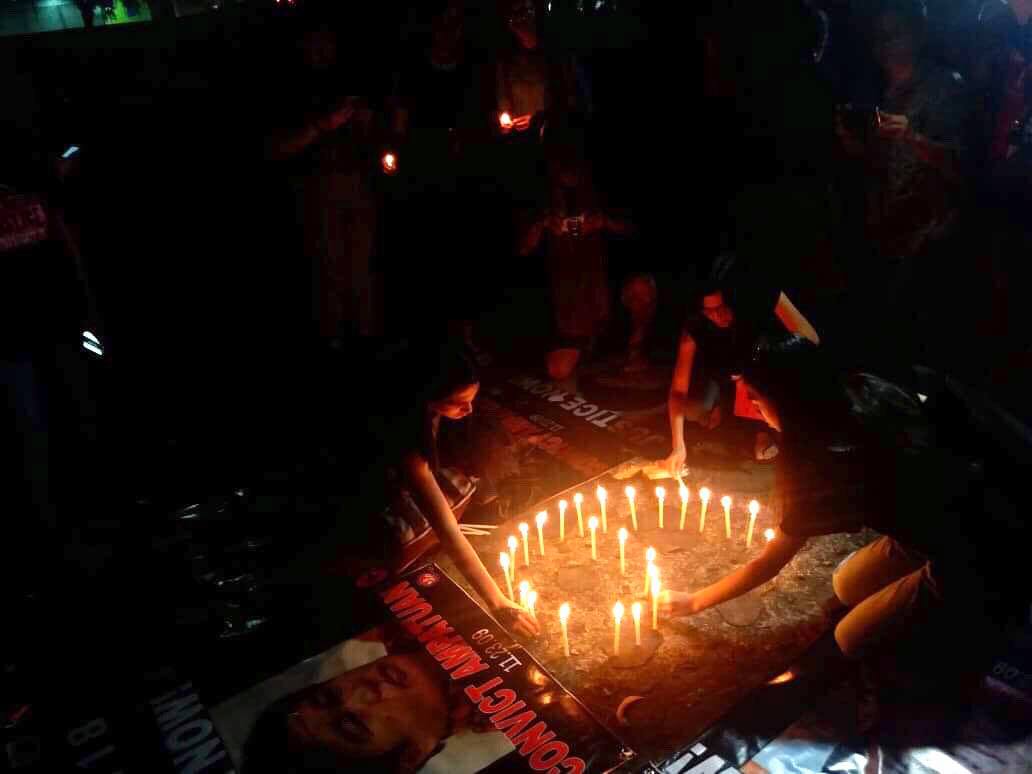“Fifty-eight were dead. They traveled far and long, taken to Sitio Masalay, Barangay Salman where a still undetermined number of people were killed. Evidence showed 58 dead. Make no mistake about it, it was possible more than 58 were killed but evidence could only support 58. All those missing at that time, people were talking about around 70 were killed. Every year during the commemoration, we have to apologize to those we still have not found, still have not identified. The perpetrators of this crime executed it with the intent of erasing the crime, all the victims,” recollected journalism educator Prof. Danilo Arao.
The National Union of Journalists of the Philippines (NUJP) chapters and members in Metro Manila lit candles on November 23 at the Bantayog ng mga Bayani in Quezon City to commemorate the ninth year of the Ampatuan massacre.
“We hope that we continue to commemorate this day in the coming years. We continue to unite in the face of repression—as what happened to Rappler earlier this year. Then, we held a Black Friday protest. Today, it is a Friday, another Black Friday protest,” said Arao.
The Ampatuan massacre claimed 58 lives, 32 of which were journalists covering an election-related event.
They were on their way to a local Commission on Elections office to witness the filing of the certificate of candidacy for then-Buluan vice mayor Esmael Mangudadatu, running against then-incumbent mayor Andal Ampatuan Jr., when they were flagged and killed by gunmen in Ampatuan town. Those killed included Mangudadatu’s wife, his two sisters, journalists, lawyers, aides, and motorists who were mistakenly identified as part of the convoy.
The Committee to Protect Journalists tagged the massacre as the single deadliest event for journalists in history.
Arao pledged that journalism educators would educate their students not just to fight for freedom of the press or freedom of expression, but also for the basic liberties of the people to also counter the ‘culture of impunity’ that the country long suffered.
“Like what is taught in universities on journalism, the normative standard of journalism in a poor country like the Philippines, we see that our task is not just to report. Our basic task is to fight to restore and strengthen our basic liberties, not only of the press, but also the basic human rights of the people. A journalist educator once said, ‘in the absence of freedom, it is the journalist’s responsibility to fight for it. This is the normative standard on our performance of our duties in our daily reporting tasks,” said Arao.
Case of the century
“We were told the decision will come out in a month, next month, in another month. We waited and waited, but there’s still no decision. What we want now is not just for a decision to come out now, but for the Ampatuans to be convicted—this is the call of the victims’ kin,” said NUJP Secretary General Dabet Panelo.
Panelo shared that the NUJP adopted the call of the families, “Justice Now” and “Convict Ampatuan.”
The Quezon City Regional Trial Court handling the case stated in a briefer that of the 197 accused, 117 were arrested and 80 remain at large. One hundred four accused remain on trial. Five of the suspects died. Andal Ampatuan Sr., the clan patriarch and alleged mastermind of the massacre died in detention in 2015.
Last November 5, Ampatuan Jr. submitted his formal offer of evidence to wrap up the trial that started in January 2010. The prosecution panel has announced that the case against him is already submitted for decision.
Department of Justice Secretary Menardo Guevarra said that the decision is expected early next year. The promulgation date has not yet been set.





























